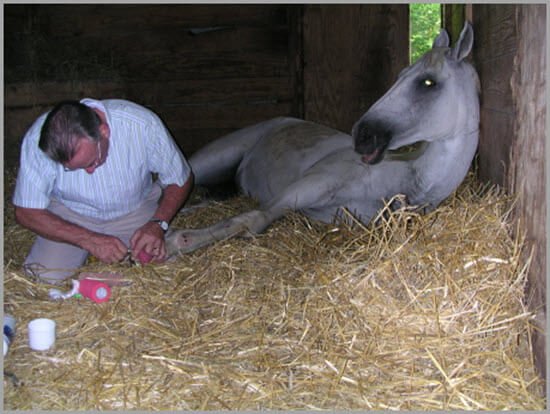No Foot, No Horse
Laminitis Prevention: How to Save Your Horse’s Feet “No Foot, No Horse” is a well known saying in horsey circles. Good horse care and stable management can go a long way towards preventing laminitis which is sometimes referred to as founder. It is a common foot ailment which can be caused by a lot of different factors. The horse moves with short awkward steps and stretches it's front legs forward and it's hind legs under his body. It puts most of it’s weight on it’s heels to avoid pressure on the front feet. This is due to the inflammation of the laminae which are a sensitive part of the horse's foot. It is usually more pronounced in the front feet. Sometimes the horse will have a fever and the hooves will be hot. There may be rings of growth in the foot - these are signs of previous attacks of laminitis. It is a painful condition and if it is allowed to deteriorate can result in pneumonia or infection resulting in death or leading to the horse having to be humanely destroyed. There are a number of causes of laminitis including: • Prolonged standing on a hard stable floor • Cantering or galloping on a hard surfaces or trotting fast for long distances • A horse breaking into the feed store • Incorrect feeding - a horse that is prone to laminitis should not be fed barley nor should it be overfed • Fat ponies and horses especially those with flat feet are prone to laminitis • It can also be caused by toxicity so pastures should be checked for poisonous plants before putting horses out to grass. • Over rich pastures - fat ponies should have their stable rations reduced and in the summer put on sparse or limited grazing. • A horse that has laminitic tendencies should not be put out to graze in Spring or late summer • Some mares can become laminitic if some of the afterbirth has been retained after foaling. • It is important that a vet is consulted as soon as these signs have appeared because lack of treatment will eventually lead to the horse being "stuck to the ground". While waiting for the vet make the horse walk for five minute to aid the circulation to the foot. The vet will advise on treatment depending on the cause of the laminitis which may include keeping the hooves well trimmed. In cases where the laminitis has become chronic I.e. the [...]


